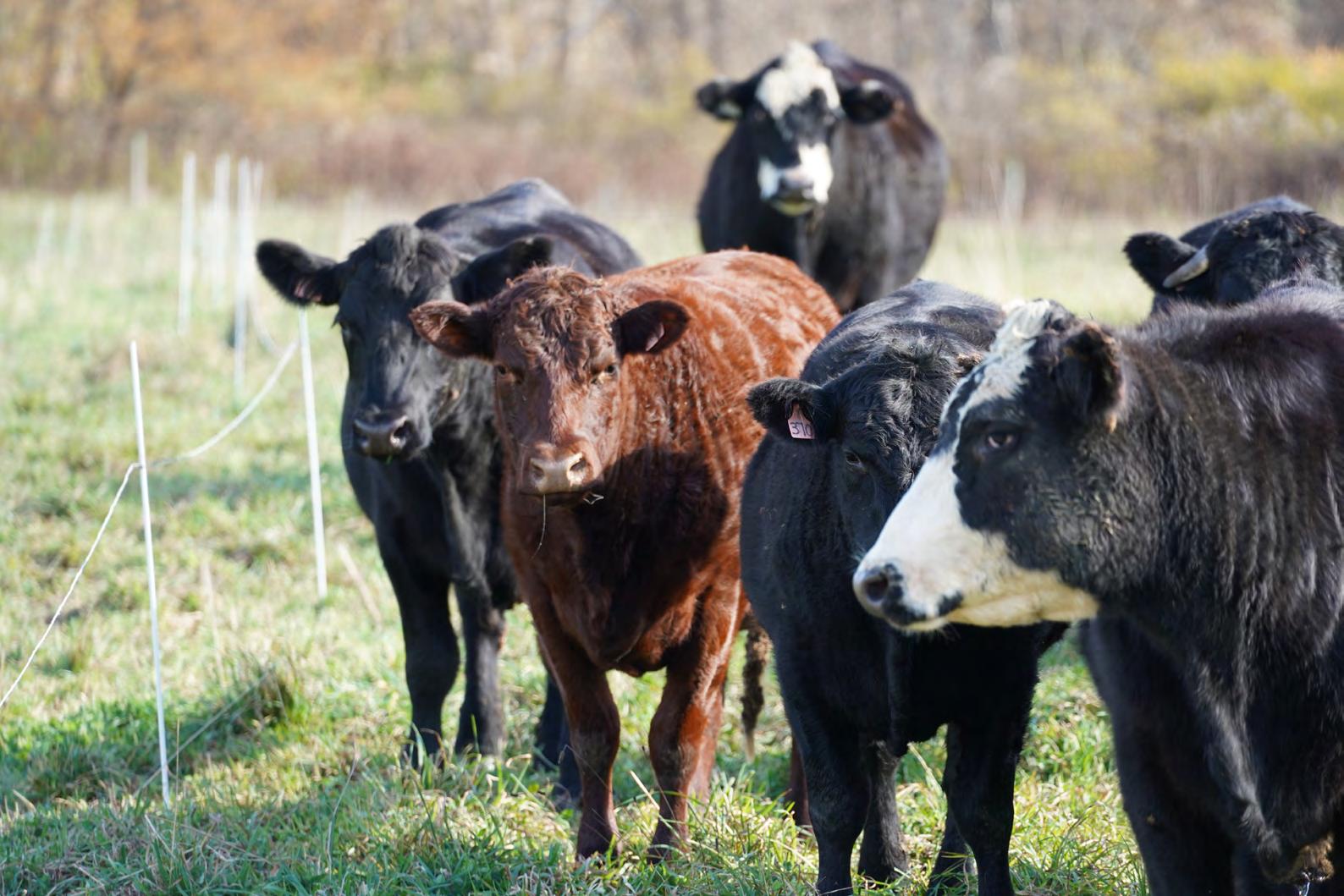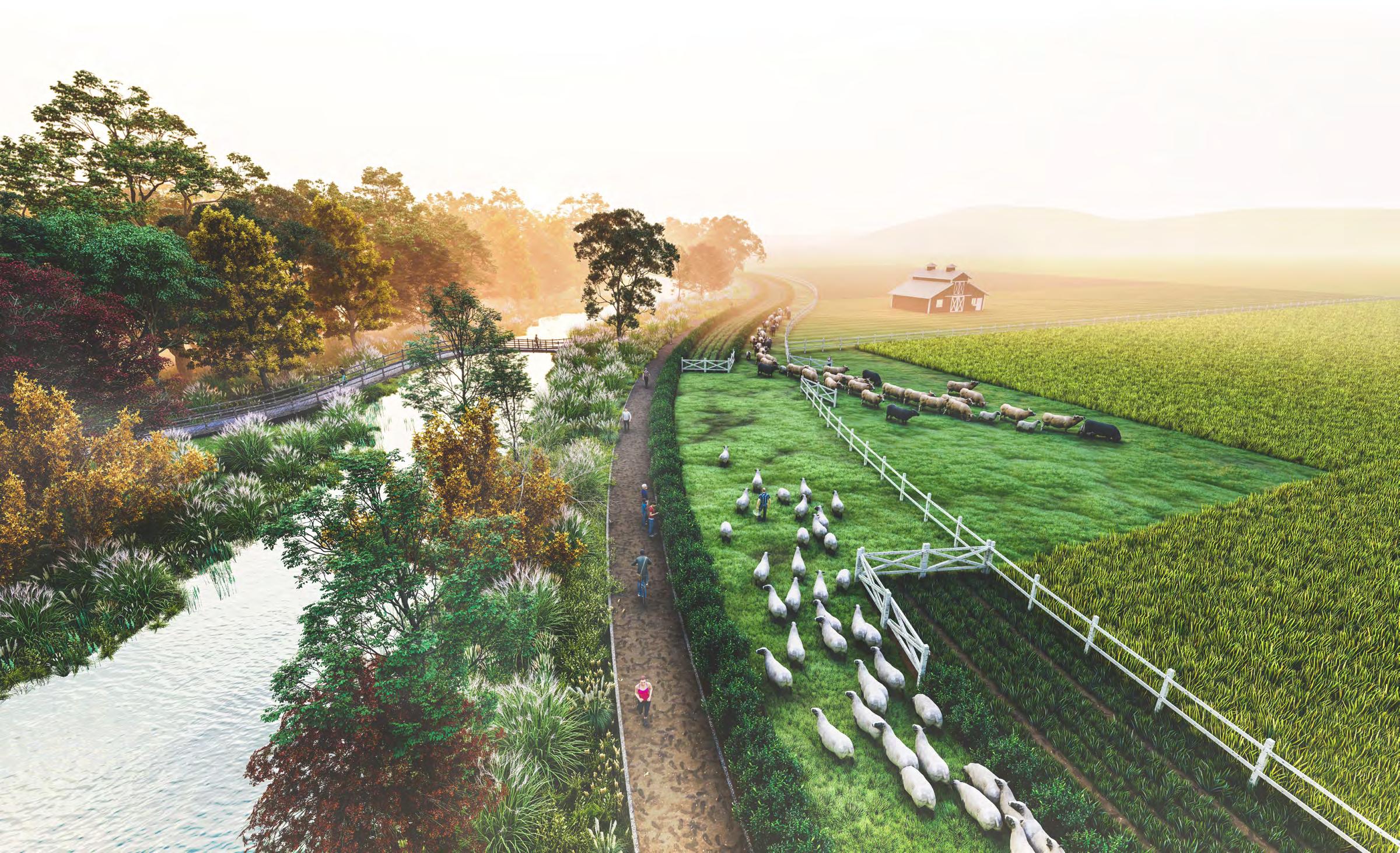
8 minute read
Regenerating Our Farming Systems
Introduction As the COVID-19 crisis continues to proliferate in the United States, it has subsequently exposed the nation’s inadequate systems as well as the general lack of proactivity in response to crises at the national level. Looking more closely at these systems, the farmland now needed to help ensure community food security for the duration of this pandemic is crucial. However, much like the nation’s overwhelmed health system, the U.S. urgently needs a strategic plan for both agriculture and farmland. In today’s climate crisis, there are certain industries that are considered to be major culprits in regards to their production of greenhouse gas emissions. Increasingly so in the eyes of the public, agriculture finds itself as one of the most notable contributors to greenhouse gas emissions. Some may wonder whether or not this has been unfairly attributed to the industry. Globally, this reputation and perception has evoked protest and movements against the agriculture industry; an industry that we simply cannot live without. This is highlighted by current events in New York City as the city undergoes a lockdown due to a global pandemic and it’s residents continue to need access to fresh produce. Our food comes from farmers throughout the nation and the commodities they produce from both their crops and livestock. Although the industry is clearly important to our daily lives, this does not mean we can let the agriculture industry off the hook in regards to their rate of emissions. This holds increasingly true as we become more concerned with climate change and the climates instability in the age of the anthropocene. Moving forward, it is necessary that the United States re-think the ways in which it approaches agriculture. The nation needs to understand that there are more sustainable practices when it comes to agriculture and how farmland is managed. In the fall of 2019, the Masters of Architecture and Urban Design program framed their Design Studio on the Hudson Valley and the Green New REGENERATING OUR FARMING SYSTEMS by Angus PALMER Claudia KLEFFMANN German BAHAMON
Nina LISH Nina NDICHU 18 Deal. Our group, which consisted of landscape architects and architects explored the policy framework of the Green New Deal. This proposed package of legislation is centered around policies which address climate change and economic inequality. Using the Green New Deal as reference for our research, we were prompted to re-envision how we think about topics surrounding the agriculture industry, community food security, and resiliency overall. The end result was a spatial design and system that was moulded and has continued to evolve as a result of the research done in collaboration with farmers in the Hudson Valley. By integrating a variety of concepts such as the principles of regenerative agriculture, our studio group came up with a project that would have the potential to sequester significant amounts of carbon dioxide from the atmosphere, question the rural landscape, create new local jobs, and bring together isolated farmers throughout the Hudson Valley. These concepts and proposals could be the type of thinking that the Green New Deal needs if it is to catalyze a paradigm shift in agriculture.
Advertisement
Agriculture, food and the Green New Deal Democratic U.S. Representative, Alexandria Ocasio-Cortez, has called for a 10-year national mobilization of the Green New Deal. Within those resolutions provided to Congress in early 2019, there were two key policies relevant to agriculture and food security which can be seen below:
Background Beginning as early as the industrial revolution and continuing into the Nixon administration, farmers were pressured into large scale farming, otherwise known as industrial agriculture. The timing of this federal pressure for large scale farming also coincided with Nixon putting an end to New Deal programs. Industrial agricultural practices were geared towards the promotion of a faster and cheaper way to get produce from farmland to plate. This effort resulted in poor land and crop management, which included practices such as the tilling of harvested cropland and stripping the land of quality soil, the use of heavy farm machinery, the use of pesticides and fertilizers, factory dairy farming, and the process of sending livestock--specifically ruminant animals (beef cattle, sheep and pigs)-- to grain feedlots halfway across the country. One of the repercussions of feeding ruminant livestock grain instead of grass was that it contributed to slower digestion of food in the animals’ first stomach compartment. This then led to belching, which contributes to 95% of methane emissions from ruminant animals. Subsequently, the impact on the consumer’s plate from the industrial agriculture mechanism was an inferior quality of food with a lower amount of nutrients. The food has also been produced through chemical intervention. To provide some context, roughly 94% of meat production in the U.S. is grain fed and processed through the industrial system. This starkly contrasts to Oceania nations such as Australia and New Zealand, where 97% of the meat produced is grass fed. Simply put, industrial agriculture nowadays in the U.S. operates in a way that is out of sync with both the long term sustainability of farmland as well as with the well being of the people it is designed to feed. Agriculture makes up 9% of greenhouse gas (GHG) emissions in the U.S.. When scaled down regionally, New York State agriculture contributes to 4% of GHG emissions, with only 0.64% of these emissions originating in the Hudson Valley. This reduction in emissions is the result of smaller farm operations and a demand for better quality food locally and in the New York City area. This opportunity in the Hudson Valley provides potential to not only adapt agriculture locally and produce a net zero GHG emissions prototype, but to also be a regional and national model for best practices for carbon farming.
How do we shift the paradigm? How can we give farmers the right tools and knowledge to reduce and reverse GHG emissions, to become leaders in the fight against climate change, all the while simultaneously restoring agriculture as a more appreciated and wellregarded industry? Regenerative agriculture is a step up from organic farming, which emphasizes the use of produce that has not been treated with chemicals. Regenerative agriculture goes even further than organic practices by working with nature by rebuilding soil and increasing carbon storage. This results in a lessened need for nitrogen, pesticides and herbicides. Furthermore, this results in a reduction in the likelihood of flooding and erosion. All of this works to cumulatively restore water systems and provide healthier food for the local community. Holistic management--which was originally developed by Zimbabwean ecologist Allan Savory-- is a whole farm planning system and helps farmers better manage agricultural resources in order to reap sustainable environmental, economic and social benefits. Regenerative agriculture also entails the practices of holistic management. These practices are based on planned grazing and rotational pasture management to ensure soil health is maximised. This means that the paddocks of farmlands have the capacity to be carbon sponges. Ultimately, regenerative agriculture is dependent on livestock as they are crucial in keeping the land sustainable and productive, only if appropriate rotational pasture management and diverse crop management are applied.
A spatial resolution When organising and designing our project under the framework of the Green New Deal and with consideration of both regenerative agriculture and the goal of bringing agriculture to carbon neutrality in the Hudson Valley, our project had to navigate through a myriad of challenges as we experienced constant deliberation. The final spatial resolution has taken the form of a unique system in the composition of an arterial route that will be connected with adjacent paddocks and harvested cropland that weaves and meanders through easements which dissect and intersect farms and other rural land between two small towns in Columbia County. This concept, which is proposed as a shared corridor, allows farmers to be able to share each other’s land while simultaneously developing social networks and ultimately promoting local connectivity. Livestock will be moved and rotated through the trail and adjacent paddocks to regenerate the land and sequester carbon under the principles of holistic management.

The proposed trail would become part of a new type of public realm which would also cater to human movement and passive recreation, such as cycling and walking. The trail would also extend into urban areas, connecting rural areas with key town nodes. By doing so, the trail would increase opportunities for the distribution of healthy food and the awareness of regenerative agriculture practices. With this proposal, 18% of farmland in the Hudson Valley is required to reach carbon neutrality in the agricultural sector of the region.
Economic and social benefits The transition to regenerative agriculture and this unique spatial arrangement will create new jobs, both skilled and unskilled. Examples of job creation include roles in animal husbandry, agricultural educators, food distribution logistics, abattoirs, agronomy, livestock & ranch agents, nurseries, hospitality, fencing contractors and potential new Not-for-Profit Organisations. This transition goes further than the creation of new jobs wherein it also improves quality

of life for farmers from both an economic and social standpoint. Transitioning farmers to this system would result in less cost overheads, the ability to procure better market prices for farmer’s produce, and potentially, to have an increased agribusiness capacity. It would also bring a level of environmental resiliency when climate impacts (such as drought, floods and wildfires) do occur. The healthier land would also lower the mortality rate of livestock and improve land value, which will also set up future generations of farmers with the land asset they need. This new system also enables improved social connections for isolated farmers and increases their capacity to build social capital in their localities all the while increasing the lure of being a farmer. In essence, if the Green New Deal comes into effect, it would help support family farms which have felt the effects of the current degraded agriculture system while also helping feed the mouths of millions of Americans.





